#colored Angora goat kid
Text

The tail
#baby goats#colored Angora goat kid#baby animals#cute baby#goats in diapers#stony woods farm#goats#stonywoods farm#mohair#farm#angora goat#farm animals#cute baby goat#angora#animals#goat#pinch me#hertz#cat diapers#house goat#just visiting
23 notes
·
View notes
Text
Hello!
This’ll Probably Get Updated As Time Goes On
I am Haylo (He/It/They)! A Horse Therian! Please Recommend Me Horse-Related Neopronouns.
Feel Free To Ask Me Anything (Therian-Related Or Not!)
I Have A Kin Flags Blog As Well!! @therian-and-otherkin-flags
Main Is TheHomestucker-Surgeburbofficial!
DNI: No bigoted/discriminatory people please! No NSFW either! Or Anti-Kin! Thanks!


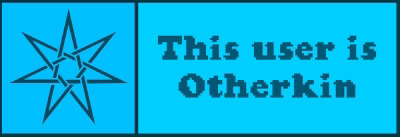

- Horse (Galineers Cob)
- Troll (@impromptucarnivore is used for troll kin)
- Object/Computerkin (@mechanizedmodem)
- Goat (Angora) (@angora-goat)
- Wolf; Kin/Otherheart, Not Sure Yet @howlwoofbark
- Minecraft Witch (@redstone-witch)
- Questioning Dryad Otherkin?
- Many Fictionkins…
About My Theriotype(s) + Tags + My Fictionkin Blogs + Ask Blogs, Which Are All Fictionkins… So Many…
Me!!
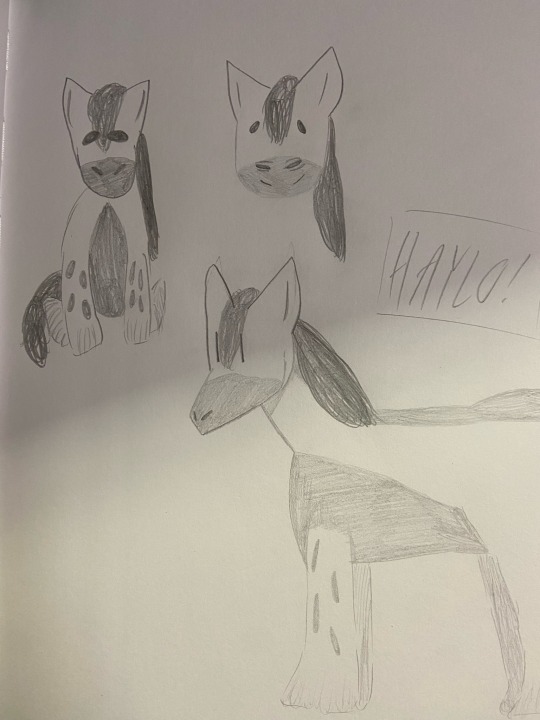
NO AI ART OF MY ART ALLOWED NO THIRD PARTY IS ALLOWED TO USE MY ART. NO REPOSTING ALLOWED. REBLOGS ARE FINE. THIS APPLIES TO ALL ART FEATURED ON THIS BLOG.
- I am a Galineers Cob Horse Therian! Alt text provides colors for the drawing. :=8) (<- Horse Face)
I’ve known I was a (horse) therian since around November-ish 2022 when a friend in real life told me about their theriotypes! I started questioning goat since December-ish 2022 and just recently (October 2023) confirmed it and figured out the species (Angora)!
Tags (These May Change):
#Horse - horse related reblogs
#Haylo’s - Horse Therian stuff
#The Gang’s All Here - Other Horse Therians
#Woah Haylo Speaks - My Own Commentary
#Horse Plinko - Therian Advice/Tips/Etc
#Honse - Horse/Therian Memes
#Horse. Technically - MLP (Usually Memes)
#Cronus - (Non-Horse) Therian Stuff (this name will probably change) + Non-Horse Therians/Otherkin
#Neighs! - Kin Calls (Probably Will Be Reblogs)
#Neigh. No Horse - Non-Therian/Horse Stuff
FICTIONKIN BLOGS:
@ask-katsuki-bakugo (Fictive Actually, Just Found That Out)
@ask-afton (also fictive; more so than bakugou as of late)
@ask-glitchtrap-the-anomaly (goes along with afton fictive)
@badlydrawncondy
@thekankrivantasdreambubbleguide
@homosuck-official
@sha-sheep
@badlydrawnkanaya
@hatsume-mei
@ask-the-hs2-kids (Kins Are Harry And Tavvy)
@ask-cal-the-puppet
@ask-mxes
@ask-toshinori
@jesse-pinkman-official
@badlydrawnsollux
@defective-portal-turret
@ask-glamrock-freddy
(Ordered In Frequency)
Complete Fictionkin List: (Yes Doubles Are Fine!; Not Ordered In Frequency)
Dave
Davebot
Davepeta
Heinousstuck Dave
Rose Lalonde
Arquius/Equius
Cal
Kankri
Caliborn
Kanaya
Karkat (Summerteen Romance Writer)
Doomed Karkat
Sollux
Crow Strider
Alt! Murrit
Ellsee Raines
Harasa Laylan
Ghinkt Sveere
Ollapa Sulise
Rodard Teslaa
A Seadweller
Harry Anderson Egbert
Tavros Crocker
CD (K_K)
Jevil
Flowey
Sans
Grillby
Endogeny
Underswap Papyrus
Underswap Sans (Not “HappyHappy” One)
Underfell Sans
Fresh Sans
Kiyotaka Ishimaru
Kyoko Kirigiri
Byakuya Togami
Gundham Tanaka
Fuyuhiko Kuzuryu
Shuichi Saihara
Kakeru Sengoku
Shu Iura
Principal (Basically-Baldi Comic)
Casino Cups Cuphead
King Dice
Glamrock Freddy
Glitchtrap/William Afton
MXES
Funtime Freddy
Withered Freddy
Phone Guy (Dayshift At Freddy’s)
Hawks
All Might
Villain Deku
Mei Hatsume
C! Grian (Hermitcraft)
C! Joel (Life Series)
Minecraft Witch
Wally Darling
Jesse Pinkman
Luigi
Wisdom Dog
Captain Man/Ray Manchester
#horse therian#therianthropy#horse#horses#therian#equine#equine therian#horsekin#horse kin#horseblr#intro post#otherkin#horse alterhuman#horse otherkin#other kin#otherkin community#therian community#equinekin#equine kin#nonhuman
15 notes
·
View notes
Text




The top pic is my alchemy yarn. I am really proud of this yarn it’s called alchemy because I was trying to achieve Something a kin to a precious gold in the fiber world. It’s a recipe of Marino that was locally grown, I alpaca also local, my own kid mohair and Tessa silk. I feel like it turned out to be truly some of the best that mother nature can offer. It is my yarn happy place!!!!
 The next one is a Pendragon Yarn. This is a super wash Marino base and this picture is in the worsted weight. I love the vivid color mix. I really like to work in color. I think that in this industry color is our voice. And whatever we’re expressing our voice should be clear and spoken from deep within.
This third little picture is of some eggs from our chickens. We like to raise rare breed chickens. Since we are not actually breeding the chickens ourselves our role in bringing back the population is not that our numbers count towards bringing it back but we allow those farms focused on bringing rare chickens to keep doing what they’re doing.
 and the last picture is just a random Fleece strewn across the picnic table in the backyard. We raise colored Angora goats and angora goats. I am a huge fan of goats they are so fun to have around. I love our goats. 

#avalonspringsfarm#fiberfarm#mohair#yarn#coloredangoragoats#alpaca#silk fiber#raising chickens#lifeisgood#color makes me happy#angoragoats
8 notes
·
View notes
Text
I learned about Pygora Goats today.
“Golly, what’s a Pygora Goat?” you may ask.
Pygmy-Angora.
Pygora goats are a specialty goat with multiple uses. Pygora goats are growing in popularity for their unique fiber and friendly disposition. Pygora goats are great for the small farm. They are great with kids, produce wonderful hand spinning fiber, and are wonderful brush eaters. They are fun loving and always curious.
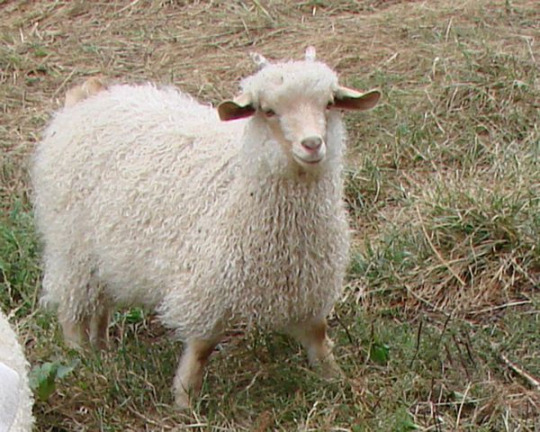

AND they come in fashion colors.


LOOK AT THIS BABY.

Look.

4 notes
·
View notes
Photo




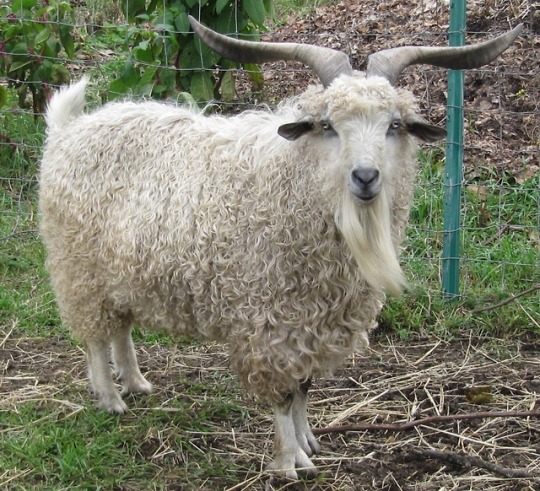
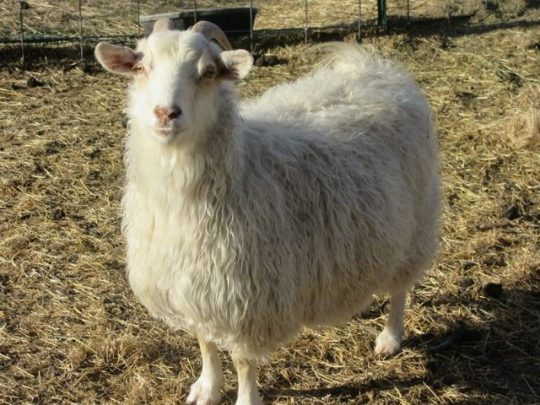




The Pygora goat is a breed of fiber goat that originated from crossing the registered NPGA Pygmy goat and the white AAGBA Angora goat. The Pygora was a purposeful cross, bred by Katharine Jorgensen of Oregon City, Oregon. In 1987, the Pygora Breeders Association was formed in the United States, and has since then been registering and promoting Pygoras. Today, the registered Pygora goat may not be more than 75% AAGBA-registered Angora goat or 75% NPGA-registered Pygmy goat. Pygora goats produce three distinct kinds of fleece.
Registered Pygora goats will produce cashmere-like fleece (Classified as Type-C), a mohair-like fleece (Type-A), or a combination of the two fleeces (Type-B). Type-A fleece is composed of fibers averaging 6 or more inches in length that drape in ringlets. It may occur as a single coat, but a silky guard hair is usually present. The fibers are typically less than 28 micrometers in diameter. Type-B fleece fibers average between 3 and 6 inches (150 mm) in length with one, possibly two, guard hairs. The fibers are usually less than 24 µm in diameter. Type-C fleece is very fine, typically 1 to 3 inches (76 mm) in length and less than 18.5 µm in diameter. Pygoras come in a variety of colors: white, red, brown, black, gray or a mix of the colors.
The weight of a healthy Pygora depends on whether it is a male, female or kid. Most kids are about 5 pounds at birth; does range in weight from 65 to 75 pounds and bucks and wethers range from 75 to 95 pounds. Pygora fiber is frequently used by artists for spinning, spindling, knitting, crocheting, weaving, tapestries, and other fiber arts. It is also commonly used in clothing. Pygoras can also be milked, producing about one liter per day. Pygora wethers generally have higher quality fiber than the does and bucks because they do not spend all their energy producing young. Pygora are mainly for producing fiber, but some people also show them as a hobby, in fairs, fiber shows, and in 4H.
37 notes
·
View notes
Text
(^EPUB/PDF)-> The FFA Guide To Raising Goats: Everything You Need to Know, 2nd Edition - BY Carol Amundson in PDF, EPub online.
The FFA Guide To Raising Goats: Everything You Need to Know, 2nd Edition
by Carol Amundson

Click Here Download =>Download Or Read Here
Descriptions :
Synopsis : ?Whether you want to raise a dairy barn full of milkers, one hundred meat goats for market, a herd of Angoras for mohair fiber, or a few Pygmies as pets, this book is for you. Expert, hands-on advice makes it easy to get started raising a healthy herd. Longtime goat farmer Carol Amundson describes the breeds popular in the United States and Canada and explains all the helpful dos and don?ts. You?ll find information about traveling with goats, marketing, treating illness, and more, including a glossary of caprine terms, tables and charts for easy reference, and a list of breed associations. Illustrated in full color, this guidebook is an indispensable resource for those who want to raise their very own goats.?Easy-to-follow tips help you to:Choose the right breed for your needs Evaluate and purchase goats House and feed your herd Keep your herd healthy Breed goats and birth kids Market goats and their products ?Reviewed and approved by Dr. Clint Rusk (Purdue University Associate
Details : Author : Carol Amundson Pages : 200 pages Publisher : Voyageur Press Language : ISBN-10 : 0760343780 ISBN-13 : 9780760343784[DOWNLOAD IN !#PDF The FFA Guide To Raising Goats: Everything You Need to Know, 2nd Edition #BOOK]Reading Download Pdf Epub
0 notes
Text
Fast Fiber Facts Part Two: Protein Fibers
We’re back with another round of Fast Fiber Facts with Miriam Felton, a designer, blogger, and the voice behind the Yarnstories Podcast.
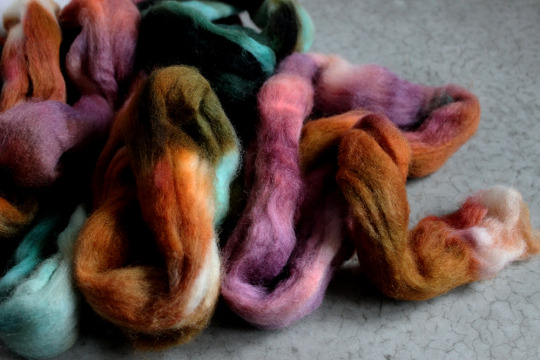
photo by Hannah Thiessen
Protein Fibers
Silk comes from the cocoons of the silk worm. Whether the silk is considered Tussah (aka Wild Silk) or Bombyx (aka Mulberry) depends on what the worms eat and effects the color of the finished silk. Bombyx silk worms are fed only mulberry leaves, and the resulting silk is white, and very strong. Tussah silk worms feed on mostly oak leaves and their silk is colored as a result. Muga silk comes from a slightly different breed of silkworm that comes from the Assam of India. Once the silk worms spin their cocoon, they are boiled to break down the sticky stuff that holds the silk strands together. Each cocoon is made of one continuous strand of silk! So as the cocoons are broken down, you basically unravel them like little balls of yarn. Silk is one of the strongest natural fibers. Alternately, you can make a lower grade of silk by waiting until the silk moth breaks out of the cocoon, and then pulling it apart. But like a moth-eaten ball of yarn, you end up with lots of smaller pieces, and broken ends.
Goats breeds and fibers are as varied as the personality of the goats they come from. Angora goats produce mohair. Kid mohair comes from the baby goats (called kids) in the same way that lambswool is the first shearing of a sheep. The first coat is generally finer fibers, with a softer hand. Goats are also the source of Cashmere. Cashmere is classified by the micron count rather than the breed of goat that it comes from, but the goats that have been bred for fine fibers are often called Cashmere goats. Cashmere is the downy undercoat that the goats produce to keep themselves warm. If the cashmere is harvested by combing, the guard-hairs are left in place on the goat, but if the cashmere is harvested by shearing, then the guard-hairs must be removed.
Camelids are a big group including camels (their downy underlayer is soft and warm), llamas, alpacas, vicuña, and guanaco. The fiber from these camelids ranges in thickness, softness, and colors, but it’s mostly warm and drapey. The really great thing about it is all the natural colors it comes in. It can be a little tricky to work with when it’s by itself (since it doesn’t have any bounce and has a tendency to hang heavy, but in a blend it can bump up softness, drape, and shine.
Yak, Bison (aka Buffalo), and Qiviut all come from similar animals. They all come from the downy undercoats of the fiber beasts. It is all very very warm. A thin layer of qiviut is enough to keep you warm in arctic winters, so unless you live within spitting distance of either pole, you may prefer something of a blend.
And now we come to sheep. Sheep grow fleece like we grow hair, but from all over their torsos. They’re sheared 1 or 2 times a year (depending on the breed), and they produce a fiber that runs the whole range of crimpy to curly, and silky to sticky. There are so many breeds of sheep and variations from animal to animal that you could spin or knit your whole life and never try every iteration. I must admit, I’m very biased in favor of wool. Wool resists absorbing water (and is downright waterproof with its natural coating of lanolin), and once it does finally absorb water it will stay warm and feel dry. It will keep you warm when you are cool, and keep your cool when you are warm, It’s odor-resistant and sustainable. When you add the easy-care that the superwash process brings to wool, I really can’t think of any situation when wool wouldn’t be suitable for a project. Wool also works beautifully in blends with all these other fibers.
If you’d like to learn more about the yarns you love before they reach your hands, please do check out YarnStories Podcast, or subscribe in your podcatcher of choice. You can check out Miriam Felton’s patterns on Ravelry, and my tutorials on her site and on YouTube.
#knitting tips#crochet tips#fiber facts#protein fibers#animal fibers#wool#miriam felton#knitcrate#yarnstories#yarnstories podcast
4 notes
·
View notes
Text
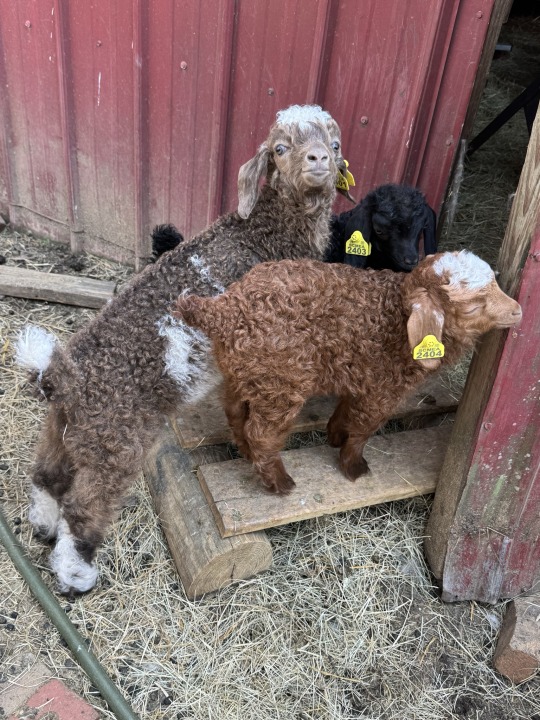
These are my girls
1K notes
·
View notes
Text
The FFA Guide To Raising Goats: Everything You Need to Know, 2nd Edition Read Online
Read and Download The FFA Guide To Raising Goats: Everything You Need to Know, 2nd Edition Full Online Just Here !

Details Of Books :
Author : Carol Amundson
Pages : 200 pages
Publisher : Voyageur Press
Language :
ISBN-10 : 0760343780
ISBN-13 : 9780760343784
Descriptions :
?Whether you want to raise a dairy barn full of milkers, one hundred meat goats for market, a herd of Angoras for mohair fiber, or a few Pygmies as pets, this book is for you. Expert, hands-on advice makes it easy to get started raising a healthy herd. Longtime goat farmer Carol Amundson describes the breeds popular in the United States and Canada and explains all the helpful dos and don?ts. You?ll find information about traveling with goats, marketing, treating illness, and more, including a glossary of caprine terms, tables and charts for easy reference, and a list of breed associations. Illustrated in full color, this guidebook is an indispensable resource for those who want to raise their very own goats.?Easy-to-follow tips help you to:Choose the right breed for your needs Evaluate and purchase goats House and feed your herd Keep your herd healthy Breed goats and birth kids Market goats and their products ?Reviewed and approved by Dr. Clint Rusk (Purdue University Associate .
If you want to get books full page , click link in below or Click button ...

OR
READ The FFA Guide To Raising Goats: Everything You Need to Know, 2nd Edition FULL ONLINE
0 notes
Text
EXPLORING MATERIALS
MOVING DIVIDER / CURTAIN
Beginning with the main features within the building - curved walls. I’ve been thinking how I can transform a space with transparent walls, to divide but not separate its surroundings. Do I keep them stationed as one hanging sheer curtain that opens and closes, or do I create a cardboard wall the moves in all sorts of directions. This feature is the biggest feature I want to focus on, and the material and textures I choose is going to be well thought out.
Ive explored into artist with similar ideas, starting with Mimi Jung, on her ‘Sight Unseen’. She creates furniture and objects starting from powder coated steel frame, and using ethereal mohair weavings. This creates such a beautiful contrast in material, and the colors she uses seem to contrast its surroundings too. The soft weaves create comfort, and its shapes create movement.

I found that ethereal mohair is more insulation than wool, although it’s not a necessity in a library, but they have more sheen which makes fabric made from them more attractive. It also wears better than sheep's wool.
This image shows how delicate the fabric is, and it’s buildable, so some areas can be more dense than others. However, because this material is from Angora goats, its quite expensive, and most times the goats are slaughtered for this fibre.
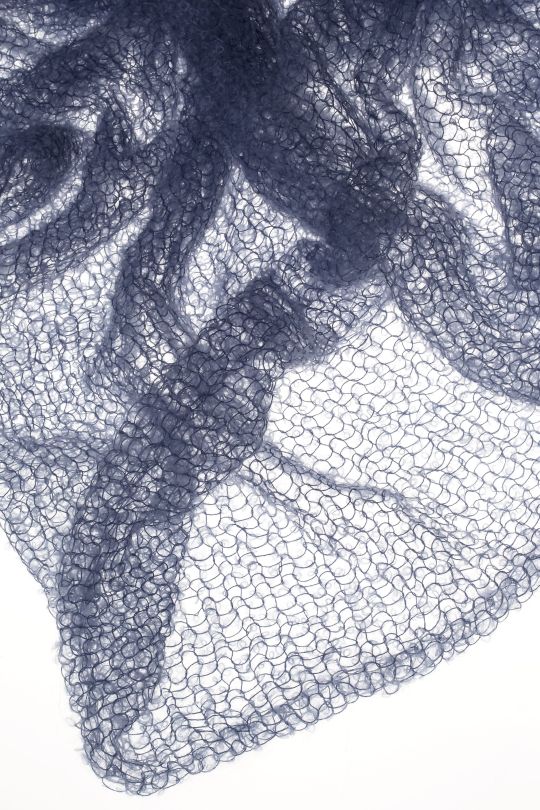
I also looked into paper materials - the construction of a wall that can expand or shrinks. This example is made from artist STEPHANIE FORSYTHE, found on MOLO, a company who makes extremely clever furniture, room dividers, and lights. This sustainable design explores shape, texture, and flexibility within the space, which is an extremely interesting way to divide a space up. However, linking this into the library space wouldn't work for my design needs, and those needs are transparency. This space needs a complete open floor plan to avoid any curious or misleading circumstances in hidden spaces. I could explore this idea with transparent paper but I feel it isn't durable enough for the space. Having to consider children, accessibility, and 10 years of use.

https://www.architonic.com/en/microsite/molo/3101289
Fabrics
My first idea was to use sheer fabrics for these spaces. Perhaps a linen curtain as some can be netted slightly stiff, but still flowy. But just like the Mohair, its still delicate and may not be durable enough for the space I'm using it in. Of course there is organza, which is light and silky, or even a tule. However, with any kind of fabric I feel it doesn't push the design enough.


Last week I would have gone with a fabric and said job done, today I push myself to go further, and ask myself, how am I applying my design sense into this library, how can I utilize materials in a way that can be durable, lasting, clever, and give me the sense of art. This feature is the main concept so far for this library, so why not make it a piece of art - an art installation.
Some other materials I have thought about are:
Wood
I thought about constructing some areas that wood could divide the space with, thinking about texture, color, and depth. But this would have meant they would most likely be stationed on the ground, disregarding the idea of moving objects and fluidity in the space.

So I though perhaps creating a design that was similar to a beaded curtain could also work. This wood could be parts of recycled material from the local building sights, or fallen sticks from trees. The idea of exploring organic shapes and textures, as well as colours and type of timbers could be a fun and creative way to bring in some local context, even as well as Maori history through the spiritual stories of trees.

This idea actually reminds me of Hella Jongerius work of the United Nations North Delegates’ Lounge, New York in 2013. And other designers Rem Koolhaas, Irma Boom, Gabriel Lester and Louise Schouwenberg.

This work made with knotted yarn and porcelain beads, creates an extremely fascinating feature for the space, although its not diving the space, it changes the view of the space through its light and shadows. Its large existence also makes it to be a big master piece installation, and truly transforms the room.
Another Artist that comes to mind is Petra Blaisse, who has been awarded for her exhibition and art installation within architecture. So much of her work is beautiful and well designed, but there is one called Maison à Bordeaux. She creates this home space entirely with curtains. She explores a range of material and colour, to make up the atmosphere of each room and space, creating a interesting, yet soft approach to architecture. Her work reminds me of my ‘Moving walls Experience’ project, where I explored the contrast of harsh structure, and soft walls.


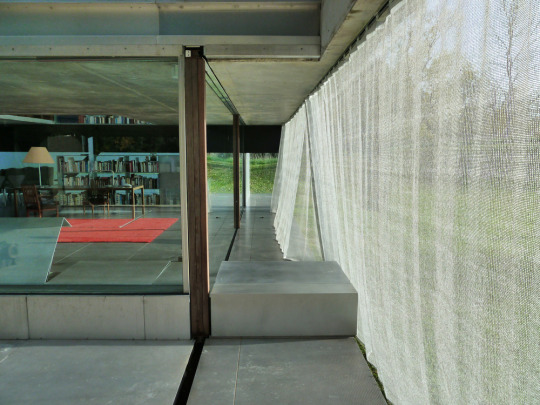

Metal
An in between of durability and fluidity. A material that can be weaved, welded, recycled, and made sheer. I feel this material could be a great start to where I'm wanting to go. The exploration of metal being designed and made to divide a space, and a beautiful way to create movement in space.

This is something I've already made my mind up on, I think metal can be viewed in many ways through its colour and shape, and I feel its the best material I could use to make divided spaces for the individual quiet area. I would like to explore this material and use it within my design. It’s durability being the biggest reason, it is strong, hard to break, it isn't a fabric that will wear away or get stained. I could be creative through its design on the metal, perhaps a Maori symbol on it. It is sheer enough to see through, but dense enough to feel like a different space.
Ive also thought about what design this metal can be, I could make a custom made metal curtain, or perhaps use recycled material for this, and up-cycle it.
I did some appalling sick sketches to see what pattern could work to create a moving sheet of metal, then did some rough patten making on illustrator.

Glass
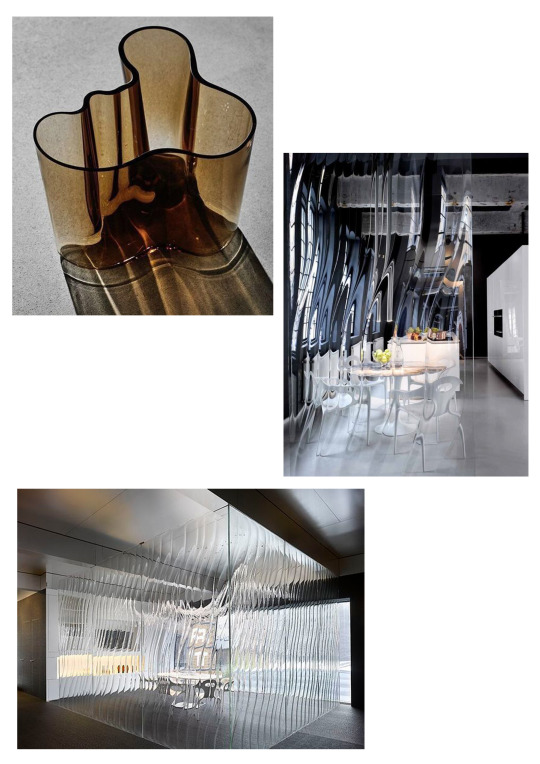
Semi reflective film - colored film
Other materials I have thought about but know now I will not use are:
Paper - Too light, too fragile for a curtain
Netting - Another durable material but not the look I am wanting in the space
Light - Light won't be a good enough diver of space, and this can interfere with reading placements
Plants - Lovely feature and colour but again not durable for kids and can be ruined
COLOR PALETTE
For the colors within the space, I wanted to keep it fairly neutral and modern, but bring in some soft colors to make it playful, and create a calming, motivated atmosphere.

Textures -
BOOKSHELVES
For the bookshelves, I want to make custom bookshelves that are still movable like the current ones. My first idea was to fit them into the walls so they were fixed, however, I thought it would be better to design some that can be moved if need be - that way I'm also preserving the building and not making any more permanent changes to the interior. The current bookshelves at the moment are metal, and characterless. To intertwine my stye for the library, I would like to make the bookshelves timber. This timber will be recycled timbers from construction sights in Grey Lynn, as well as from timber companies that have remains of timber planks. This will make the design of the library quite rustic looking, however, the recycled planks will be refurbished to maintain a cleaner, possibly 1920′s style.
Using recycled timber planks supports my idea of creating a Kaupapa within the library, from the Grey Lynn area itself. Bringing together parts of the area, and timbers located from homes also creates a space that the public can appretiate, and it symbolizes coming together as a community, bringing together the Maori priciples.
The bookshelves measure at 1525mmH by
FLOORING
Material - Quality, function, sound
For the flooring within the library area, I want to keep a durable carpet that works within the space. This is because of the sound elements within the building. Carpet will stop any echo, loud steps, or any movement within the quiet space. Sound is most important within a library, and it needs to maintain its quiet space for the public to use.
I have thought about colour and quality of the material I want. Because of the color palette I am wanting within the space, which is neutrals, greens, and wooden elements, I don't want to go with an intense pattern design. I find in many libraries, the carpets can be quite tacky with the colors and pattern. Because I want to create a space thats more balanced, ever so slightly modern, I want other elements within the space, like my metal curtain and glass room, to have more focus. So I want to use a textured, durable, and neutral carpet.

I did think about placing a soundproofing underlay and then using a vinyl type material or timber, however I believe using carpet makes the space that ever more comfortable, as it is such a small space. It needs to reflect a comfortable, quiet atmosphere, and because of my layout it supports the intentions of the space.
Using this type of pattern and texture also brings together my design elements of movement, with circular or moving patterns.
The Hall Space
Within the hall space, I am keeping the Rimu flooring, however, I am wanting to lift the polish and refinish them, that way the beautiful Rimu can stay, but look more refreshed and cleaner. I also think the color of the orangy Rimu currently isn't quite the color I want in the space, so lifting and sanding the floors, and staining it a different color will help portray the atmosphere I'm wanting to create.
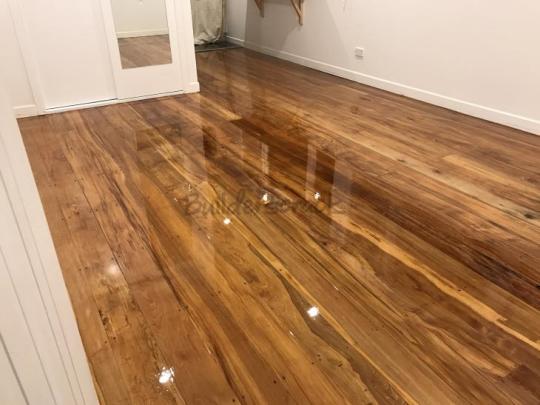
FURNITURE
Material - touch, sound, durability
For the furniture within the library space, I’ve brought in seats that are rounded, to continue the movement I'm creating within the space. The reason for this is because I don't want to have blocky, harsh furniture, which can make for more of a formal atmosphere. Using rounded, curved furniture will help create the space to be more fluid and softer.


LIGHTING
I was unable to attend most classes from week 8-11, however I did recognize a detail for lighting, and I wanted to do a quick analysis of mood lighting/ custom hanging light fixtures within the space. On top of this of course is windows, and flat ceiling lights

Because my space is all about comfort, and custom areas for the public, lighting is extremely important to create ambience and mood. Just like how color in a space can determine a feeling to a person, lighting can have that same effect. When visiting the library I found the lighting was a perfect amount for reading and working, yet relaxing. Because of the large arched windows in the space, these smaller lighting fixtures would be plenty enough to further create a comfortable, yet modern and professional atmosphere.
0 notes
Text
Pygora

Pygora Goat “Peanut” of Harmony Homestead (Breed Association Link)
The pygora goat is a fiber goat that originated from crossing the pygmy goat and the white angora goat.
Pygora goats will produce cashmere-like fleece (Classified as Type-C), a mohair-like fleece (Type-A), or a combination of the two fleeces (Type-B). Type-A fleece is composed of fibers averaging 6 or more inches in length that drape in ringlets. It may occur as a single coat, but a silky guard hair is usually present. The fibers are typically less than 28 micrometers in diameter. Type-B fleece fibers average between 3 to 6 inches (150 mm) in length with one, possibly two, guard hairs. The fibers are usually less than 24 µm in diameter. Type-C fleece is very fine, typically 1 to 3 inches (76 mm) in length and less than 18.5 µm in diameter. Pygoras come in a handful of colors: White, red, brown, black, gray or a mix of the colors. Pygora wethers generally have higher quality fiber than the does and bucks because they do not spend all their energy producing young.
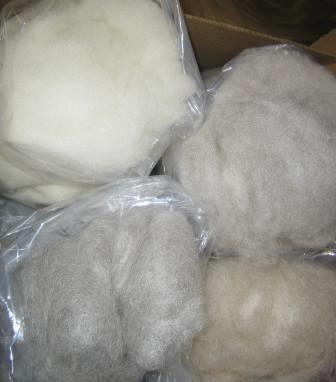
Four Pygora Clouds

Pygora guard hairs removed by the dehairing process.
Sage Pygora Yarn
Off white fiber dyed at a .5% Depth of Shade; 60% Amazon Green, 20% Sunshine Yellow, 15% Ruby Red, and 5% Amethyst Purple.
Berry Pygora Yarn
On off white fiber, dyed at a .5% Depth of Shade; 75% Ruby Red, 25% Amethyst Purple.
Orange Pygora Yarn
Dyed white and gray fiber at a 1% Depth of Shade; 95% Sunset Orange, 5% River Blue.
A note from a friend.
Hello Sarah!
Well Pygoras are the BEST fiber friends The fleece on the animal is just wonderful to the touch. Since I was a child, I was intrigued with the spinning wheel. As an adult, I was excited with the idea of making a product from start to finish. I found pygoras to be friendly, amusing, portable (to festivals,community events) and enjoy watching herd behavior! They were not overly expensive, and small enough for me to handle all of their routine care and sheering. The Pygora Breeder Association was very helpful in sharing information with me, as was the breeder from whom I bought my goats . If you have not visited www.pba.com. you will find lots of information there about the breed. I still have my pygoras because I love them, they give me ample ooprtunities to spend time outdoors and find a peaceful place to hang out I would tell others thinking about getting pygoras that I have two for sale now And I would be sure that they had an understanding of what pygoras need every day of the year.
My most humorous goat episode involved driving in NYC through downtown Manhatten. I took a wrong turn, and somehow was driving through town with my mortified teenage daughter. The traffic was stopped,and my new Buck was rather vocal. It was fun to pretend we did not know we had a goat in the car. I hope that helps, Oh, and as far as using photos; as long as you reference Harmony Homestead Pygoras, I would be delighted to share. Please share your blog with me so I may subscribe:)
Elaine of Harmony Homestead
Dear Elaine,
I hope you see this post. I no longer have acess to your contact information. Your story about your goat reminds me of my move to NY. We had three young Gulf Coast Native Ewes in the back of our small 4 door. We saw a young child parked in the car next to us at a gas station exclaim “Mommy! There’s a sheep in that car!!!” The mothers responce was “No dear, sheep don’t travel in cars...” She trailed off as all three bleated in her ear in unison...
Sarah
Pygora Breeders Association:
The Pygora is a fiber goat bred purposely to produce a wonderful, lofty, soft, fiber that does not coarsen as the goat ages! Pygoras have an affectionate, engaging personality, a manageable size, good health and fleeces in a range of colors. Pygoras were developed by Katharine Jorgensen in Oregon. The Pygora Breeders Association (PBA) was formed in 1987 and maintains the registry herd book. All Pygoras come from registered parents and can trace their lineage back to two specific parent breeds: American Angora Goat Breeders Association (AAGBA)-registered goats and National Pygmy Goat Association (NPGA)- registered goats.
A Pygora goat can have one of three fleece types:
• Type A—averages 6 inches in length, is long, lustrous, has ringlets and should have very few guard hairs. The fiber is very fine and feels silky, smooth and cool to the touch. The fibers typically are less than 28 micrometers in diameter.
• Type B—a strong, lustrous fiber that is curly and very soft. A type-B fleece averages 3-6 inches long, and may have two types of guard hairs: an obvious, stiff guard hair and a silky guard hair. It is the uniquely Pygora fleece - very versatile, warm to the touch and soft. The fibers typically are less than 24 micrometers in diameter.
• Type C—a matte fiber with crimp and a very short staple length (usually 1-3 inches). It has a very obvious coarse guard hair and is warm to the touch. Type C has the finest diameter of the three fleece types and can be as soft as fine cashmere. The fibers typically are less than 18 micrometers in diameter.
Q: Why did you start raising pygoras?
A: I started our Pygora herd out of the desire spin and weave my own fiber, teach animal husbandry to our children and enhance our country life with some unique, fun loving animals. When researching different animals and breeds, I was drawn to the Pygoras, for not only their fiber, but for their size and potential for being a multipurpose goat.
Q: Why do you still have pygoras?
A: Why, simply, because I love them and the fiber they produce. I enjoy the process of raising them. They provide a continual learning experience, from breeding and raising the kids, to shearing, processing and working with their fiber, the learning never ends. There really is never a dull moment on the farm or in the fiber studio. I continually have new ideas that I want to explore, research and create. Right now, I am pouring over the micron test that just came back from the lab and learning more about each of my goats fiber. In conjunction to the facts & numbers on paper, I have taken one ounce of dehaired cloud from each animal and am working on spinning and crocheting a block for comparison samples. All this will help in selecting breeding pairs to improve the future generations of Pygoras that we produce, and providing the best fiber possible to fiber artist.
Pygora Breeder:
Q: What would you tell others thinking about getting into pygoras?
A: Three things....First, Make sure that they are truly Pygoras. Meaning that they are registered with the PBA. I learned this the hard way. The first goats that we purchased were not registered, they were great fiber goats, but not Pygoras as I was told that they were, they were simply a cross. As Pygoras were what I wanted to raise, this was quite the disappointment and it set us back a couple years before we could establish a true Pygora herd. Starting out with quality stock that you can trace bloodlines and lineage is very important when you are wanting to raise and improve any breed. Second, It will take time, love and dedication. Yarn farming isn't always as romantic as it sounds, the vet may need to be called or a fleece may be too far matted to be saved, and it seems the barn more often than not needs to be mucked out. In the long run, it is all worth it. Third, find your support network. Join the PBA and get to know others with Pygoras, they can be an amazing help!
Q: What is the most mind blowing experience you've had with your pygoras?
A: This is a hard question to answer. There really isn't one experience that comes to mind. Maybe it is because for me it has been the whole experience, a daily experience. Right now, it is the twins that greet me every morning out in the barn. They are only a week old and take a little bit of my heart every time I see them. We have had 10 kids born this season, they have all been special, but these two are by far the sweetest. They come out from behind their mother or from their hiding place just to say "hello" and nibble on my fingers or pant leg.
Okay, so I think that covers your questions. If you have more, please let me know, I would be happy to answer them with long run on sentences. =) A friend of mine recently asked me if I think about goats all the time, and I had to honestly answer her, "Yes, pretty much." She recently purchase Pygoras from me, and is finding them in her thoughts often, too.
You can find more photos and recent updates on my FaceBook Farm page, too. https://www.facebook.com/LittleHawkFarmPygoras
Please, send me a link to your blog post about Pygoras, I don't want to miss it!
Ruth Hawkins
Little Hawk Farm Pygoras
Thank you:
Ruth Hawkins of Little Hawk Farm Pygoras
http://en.wikipedia.org/wiki/Pygora_goat
http://www.pygoragoats.org/index.html
http://www.harmonyhomesteadpygoras.com/our_pygoras.htm
3 notes
·
View notes
Text
Yesterday was our second annual Yarnapolooza. Connie and I took the day off of work for our birthdays. For Christmas this year, I adopted an Alpaca for Connie from Willowbrook Alpacas. So this year’s Yarnapolooza was named for Connie’s adopted alpaca, “The Marcus Adventures.” She even made t-shirts for us to wear, with Marcus pooping yarn!
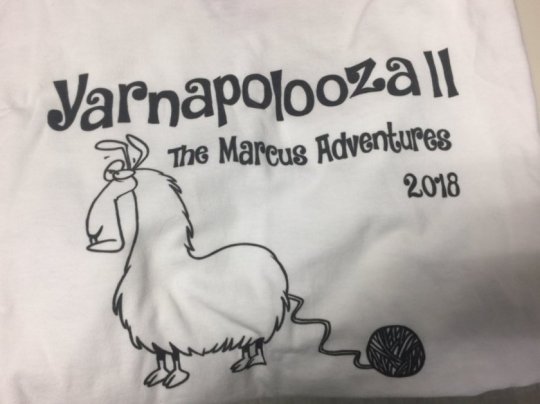
We started off our day visiting Marcus at Willowbrook Alpacas. We were able to hang out with the alpacas and pet and feed them. They are all so cute and we didn’t get spit on! Bonus. We also got to visit with horses, a goat, and Magnus, the chocolate lab. Such wonderful hospitality! Now I want an alpaca. I wonder how my cats would react. lol
Hello Marcus!
Marcus
Connie and I show off our t-shirts
Feeding an alpaca
Marcus sniffs my hand
Marcus wants the food
Connie feeding an alpaca
Breakfast time
Max is a suri alpaca.
Look at those adorable faces
Bye Marcus!
This year we ended up going to three local yarn stores and Hobby Lobby. Kid Ewe Knot is my regular yarn shop and one of my favorites in the area. I just think the selection here is awesome and the owner is so nice. I found lots of pretty yarn to add to my stash here including a beautiful Mohair yarn. What’s funny is I bought this same yarn in a different color last year. At least my taste is consistent.
Next up was Hobby Lobby. I was able to but a really soft lining for the hat and cowl that I made. I found brown yarn that I was looking for to make a wig for Halloween. I also bought some scrubby yarn. I just think Hobby Lobby has the best yarn available outside of a yarn shop.
We drove out to Sewickley and stopped at Sewickley Yarns. I ended up buying some cute sock yarn and this gorgeous yarn from Manos del Uruguay. I’ve used their yarn before and just love it. Connie also commented that I always find the best yarn and she never sees it.
We ended the day at Dyed in the Wool. They has this amazing baby alpaca yarn that I was so tempted to buy, but I refrained myself. I did end up with this amazing angora yarn.
I have a yarn addiction, and this annual trip really feeds my addiction. Connie says I’m a yarn snob. I think I just love yarn. As the one woman said at Sewickley Yarns yesterday, “Why are all the yarns I like so expensive?” And I responded, “Because you have good taste.”
Next year Connie says we should go on the road for Yarnapolooza. Hmmm. Taking a trip to another city to yarn shop for our birthdays? That could be a lot of fun!
Hello from Kid Ewe Knot
Isn’t it beautiful? All that yarn!
Adding to my stash. ❤
Yarnapolooza II: The Marcus Adventures Yesterday was our second annual Yarnapolooza. Connie and I took the day off of work for our birthdays.
0 notes
Text
Shaggy Rugs Make a Comeback!
For anyone who is wanting hard cash - which most of us are nowadays - but need to make a splash by decorating the house, how about buying a inexpensive shaggy rug? They are among the exclusive structure objects that epitomize the 1960's,shaggy along with the shaggy is creating a huge comeback!
This kind of rug has liked a spot in background considering the fact that early Greek civilization, when an analogous style of rug was invented employing goats wool. Luckily, technological know-how has advanced and you no more really need to shear your goat to make your very own shaggy rug!
These lengthy pile rugs can be purchased in a variety of fibres ranging from cotton, wool and angora to magnificent leather-based. Shaggy rugs may also be present in a amount of various colors and styles and layouts to accommodate whichever area you want to update.
Lots of individuals use these rugs to produce a sumptuous or perhaps seductive influence in a very master bedroom. Just the thought of wriggling your toes into such a rug on a chilly early morning could make the thought of getting up considerably more appropriate. And having undressed in an evening? Well, we will depart that up towards your creativity. Just recall It'll be so much better with a shaggy rug associated!
So wherever else can you employ a good, inexpensive shaggy rug? These are amazing for youths' rooms where by many of the funkier colours and designs can develop a terrific focal point. Kids also enjoy the extensive, comfortable pile of a shaggy rug as something that is comforting to them. These rugs can generally be additional to current add-ons to enhance what ever glance your child decides is 'trendy' this month! Consider all the latest presents readily available on the web as there is certain to certainly be a shaggy rug that will match your Youngsters' Bed room.
Our loos are occasionally not as inviting as we wish them to become, as due to their nature they normally have tiled or vinyl flooring. Pair this with the large degree of tiles made use of on toilet partitions and you have a really cold surroundings for somewhere that may be supposed to be calming!
Counteract this By natural means cooling effect by incorporating a number of vibrantly coloured shaggy rugs and also the graphic you produce is usually really gorgeous. Brilliant colours will never only insert vibrancy but will also a feeling of heat and depth to the chilly and usually compact area. Attempt deciding on the very same colors for your towels, curtains and shaggy rug and also the result are going to be truly dazzling.
A number of people frown upon shaggy utilizing a shaggy rug inside the dining home as foodstuff residue is usually trapped inside the pile. Even so, in case you adhere to basic housekeeping rules where by your rug is worried there should not be a difficulty. In the event you spill some thing on the rug, thoroughly clean it immediately to prevent staining. Vacuum routinely and shake outdoors to ensure complete and deep cleanliness. By subsequent these simple guidelines your rug should stay thoroughly clean and new for a few years to come back.
0 notes
Text
Agilenano - News: 10 Things No One Will Tell You When You Start Tying Flies
Guest Blogger: John Satkowski, Toledo, OH, fly tying demonstrator and instructor, you can find him @ River Raisin Fly Company on Facebook
1. Everyone you talk to about tying is an expert and you should do things the way they tell you. Now granted, there are some people you should listen to. The hot guys in the tying game now like Mike Schmidt, Greg Senyo, Blane Chocklett, and Charlie Craven are people you should be listening to. They will give you good advice that a beginner to seasoned tyer can use to increase their skill. Uncle Bob’s buddy who tied a handful of flies in 1976 is not always an accurate point of view for you to learn from. Over the years, I have heard my fair share of questions such as,”Why don’t you do it this way” or “Why don’t you use this material?” Sometimes sharing ideas is good and gives you a fresh point of view but you should take suggestions with a grain of salt.
2. You always have to use the newest and coolest materials in your flies. There have been a huge surge of really awesome materials that have come out in the past five years alone. Lots of new lighter synthetic materials that don’t hold water and make casting much easier, new adhesive and UV resins, and a lot of body materials that just keep getting more realistic all can make tying much faster and easier. Ripple Ice Fiber and the Loon Outdoors D-Loop tweezers are among my personal favorite things to use since they came out. Every tyer has their favorite materials and this is usually evident by looking at a large sample of their flies. My flies usually incorporate some barred marabou, ripple ice fiber, angora goat, and the long cut fiber ice dub. Many different patterns can be constructed using different variations of the same materials. Use the materials that you are comfortable with and have had success with in the past. You can always try some new materials and see which ones you like to work with and work for you.
3. The Internet is a wonderful thing, but its freedom also allows anybody to make a tying video. This kind of goes along with number one but it’s slightly different with the Internet and various social media sites. Social media apps like Facebook and Instagram allow people to share whatever they feel like, sometimes the information is less than accurate. For the most part, people are just trying to get their stuff out there or promote their tying but there are quite a few people posing as professionals that you have to watch out for. It’s sometimes best to do a little investigation before you take anyone’s advice and see what their credentials tell you. You must spray all your materials with some sort of Static Guard or wipe materials down with fabric softener sheets before you tie and you can only tie well on a balanced rotary vise are some of the more absurd things that I have seen driving down the information highway.
4. Tying your own flies will save you money…….NOT!!! If you do some fly fishing and tying and generally only use a handful of patterns, you might actually save money. For the rest of us who do a lot of tying, we are a lost cause and will never save money tying flies. As a commercial tyer, I have to present patterns in multiple sizes and multiple color schemes. That means I have to have a lot of different colors of materials and a lot of different hooks and hook sizes on hand. Lots of prototypes are tied and then retied to reflect changes to make the pattern better, so I go through a fair amount of materials. If you just want to go down to the local river with a handful of flies and catch some fish, it could be worth your while to get some basic materials and tie up some flies. Let’s say you want to tie some crystal buggers, which catches about anything, and you go to your local tying supply store and pick up some materials to tie with. I calculated about $26.00 worth of materials to tie 25-30 buggers which is cheaper than the $2.00 a piece for a commercially sold fly were you to buy that many. I did not factor the vise or tools in for the price, I figured those were a given in this case. The part where your budget gets blown up is articulated flies with some premium materials and hardware. Synthetic materials can be pricey depending on the material and if you are tying with certain feathers or premium materials you get into big bucks. Even though most of us have way too many fly tying stuff packed into every crevice of a room in our house, time spent on the vise is relaxing and peaceful. You just have to watch you’re spending on tying materials before you turn your kid’s college fund into schlappen and polar chenille.
5. You have to spend big money on a full rotary vise with all the bells and whistles. There are a lot of different kinds of vises and generally you do get what you pay for. It also depends on how and what you are tying. I am notorious for doing demonstrations and talks with a cheap $20.00 vise that I have had for years. I don’t really care what people think because I still have to buy my own vises and I use what works for me. The jaws hold really well and it still works well after eight years. I honestly don’t even use the rotary function anyway because I feel like I have more control with my hands and can get better wraps of materials that way. I do have a couple really nice Wolff Vises that I use as well for certain flies and sizes of hooks. A good vise should incorporate several things: be able to tie a wide range of hooks, hold hooks securely, and is very durable. I also tend to use a cheaper vise for tying realistic flies because I am not heartbroken when I get some varnish, etc. on the jaws. There certainly are many brands and kinds of vises around, just use what is most comfortable to you and works best for your needs.
6. Modern streamer flies have to have tons of different materials and multiple hooks. A lot of the flies I tie are articulated and some of them have more than three or four materials on them. These are the flies I am used to tying and the species I target generally require larger flies and a little more movement than traditional streamers. So-called “meat” flies have become especially popular for predatory fish such as brown and rainbow trout, northern pike, and muskies. My point of view is that more than a couple materials are okay as long as they each serve a purpose. Packing a ton of materials on a hook doesn’t really make sense unless they each serve some sort of purpose. I often employ a method of making collars and bodies using a technique I call “sandwich loop” dubbing. The idea is that the first layer and last layer of the dubbing loop is the same material, and then it is filled in with the “meat” materials sandwiched in the middle. The top and bottom later act almost like Velcro and stick to each other making the dubbing loop much more manageable. It is very similar to a composite loop but with different materials. The “sandwich loop” may have a number of materials in it, but once spun in a loop and laid sparse enough they are able to breath and move as one. This is much different than three materials for the wing or tail on a streamer. Also, a heavily-dressed streamer fly has more materials to be caught by the water which can yield great movement on the fly. It can also make the fly stay up in the water column and not able to get down to where the big boys live as quickly. Sometimes sparser tied flies don’t catch as much current and can slip down in the bottom third of the water column and be noticed quicker by the fish. I started tying my Sex Dungeons slimmer and slimmer and was able to pick up more hits by tying them a touch different. The number of hooks is up to the tier and what they want to imitate or achieve. Materials and number of hooks will dictate how the fly swims and at what depth. Sometimes a big, active fly is what the fish want, sometimes not. The Clouser streamer is a perfect case study to look at, it is generally tied very sparse and with very few materials but it consistently produces. It would be in an angler’s best interest to have some big boy streamers in their box, but some smaller or sparser flies as well.
7. The truth about what thread to use with what fly. I still get a lot of questions about what thread weight to use with what kind of fly. There is no absolute answer but these general guidelines are pretty good to follow and will help you along. Thread is weighted by two standards, the “aught” and “denier” systems. These 2 systems are usually separated by brand of thread. The chart below can be used to get a good idea of what thread to use with what kinds of flies. Most of the time I use 6/0 or 140 denier, if I am using dubbing loops with some stiffer materials I will double the thread in the loop. I don’t tie a whole bunch of deer hair bugs exclusively, but I will tie streamers with deer hair heads. There are a lot of threads for spinning deer hair, I tend to use gel spun thread over Kevlar because the gel spun will not cut the hair. The slipperier the thread, the more the hair will spin for you. As I stated earlier, these are more rules of thumb rather than fact. I tend to use 140 denier or 6/0 thread for just about everything since I don’t tie many dry flies, it’s a good utility thread for all sorts of flies.
Thread Size
Kind of Flies/Technique
14/0 or 32 denier
Midges, emergers, sz. 18-30 hooks
8/0 or 70 denier
Nymphs, dry flies sz. 10-16
6/0 or 140 denier
Large nymphs, large dry flies, streamers
3/0 or 210 denier
Pike, Bass, Deer hair bugs, saltwater
280 denier
Anything else
8. You will tie lots of ugly flies, Lots of Them!! I still remember when I was young and got my first fly tying kit that came with an instruction book with ten flies to learn from. The first pattern in the book I attempted was a black ant. I did what every new tyer does and put way too much dub on the thread and it turned out to be a bulky mess hackled with an oversized saddle hackle. I have never seen anyone just jump on a vise for the first time and tie a fly that looks decent. It really is something you have to work at and never stop learning about. You will tie probably close to 100 flies before they start to have the right shape, proportion, and amount of materials. The biggest thing is you can’t get frustrated, you just have to keep at it. If you just can’t get the hang of it, stop by your local fly shop and ask or watch some how-to videos. Jack Dennis has a bunch of great videos on how to tie many different patterns, as well as, Chris Helm. Keep at it and I promise you will start to see success eventually.
9. There are no magical fly patterns….. I think at some point every commercial tyer thinks they have just tied the one fly that will work everywhere and anytime, I know I did. The problem with that is it just does not exist. I’ve had days where I come up with a streamer fly that I think will match the conditions fairly well and I will absolutely smash the fish on it one day and go back the next day with similar conditions and catch one fish on it. Streamers are a percentage game in my mind, if a particular pattern works 75% of the time I am pretty happy with it. You may even get a higher percentage than that and that is a special pattern. I also observe how the fish reacts to the fly. Sometimes that tells you more than if they hit it. If you are getting a lot of follows but not hits, there may be an element on the fly that is not sealing the deal or your retrieve may need to be altered. Once you tie a fly and watch how it swims, that’s step one. You have to then let the fish tell you how they like it. A fish inhaling the fly whole or just nipping at the tail should tell you something.
10. Know your feathers and know your bugs. Entomology certainly is a big part of fly fishing but you don’t need to know every Latin word for every part of the insect. Knowing the pronotum is the top segment of a grasshopper will not help you catch more fish or look cooler in the river. Kidding aside, knowing some information about the insects and hatches will make you a better and more knowledgeable fisherman. Knowing hatching times, how certain insects behave, and the appearance/size of aquatic insects will make you more efficient and productive on the water. Knowing the difference between a Drunella flavilinea and Ephemerella subvaria could save the day from a visit from the skunk fairy. The same thing can be said of all the glorious feathers we lash onto hooks. I was doing a demo and I had a guy come up to me and say with a very stern, serious face, “What in the hell is a filoplume?” I had a pheasant skin in my bag so I showed him what they were and where to find them but I had to chuckle at the situation. We use all these fancy words to describe a weird fluffy down feather on the base of the calamus. See what I did there, all those fun words to describe a feather. We have grizzly, furnace, cree, badger, covert, secondary, olive variant, cream, and tippets. I am almost certain Cul de Canard means “fluffy duck butt” in French. Knowing these will help you decipher recipes that you may have found for patterns or just figuring out what the old guys in the fly shop are talking about.
Hopefully, these rules help you out in your tying. There are many more things that you will pick up along your journey of fly tying. The Romans were the first people to lash feathers onto a hook to attract fish which makes me wonder, were they also the first people to curse and throw their bobbin across the room after breaking their thread?
#FlyTyingAdvice #FlyTying #FlyTyingTips&Tools #J.StockardProTyers #FlyTyingBasics
https://blog.jsflyfishing.com/10-things-no-one-will-tell-you-when-you-start-tying-flies/
Agilenano - News
from Agilenano from shopsnetwork (4 sites) http://feedproxy.google.com/~r/Agilenano-News/~3/mD2xlkRmxdg/10-things-no-one-will-tell-you-when-you-start-tying-flies
1 note
·
View note
Text
Best Yarn for Blankets — From Goats!
When looking for the best yarn for blankets, you may not immediately think of yarn from fiber goats. The hair from goats, including cashmere, Pygora, Cashgora, and Angora fiber, is soft and warm. The yarns made from these fibers are considered luxury yarn in the marketplace. Although we often think of using these yarns for sweaters, vests, and other clothing items, mohair can be the best yarn for blankets too. Pendleton and Woolrich are two high-end wool product companies that sell cashmere and mohair blankets, throws, and pillows. These beautiful products are something you can recreate if you knit, crochet, or weave.
Where Does the Best Yarn for Blankets Come From?
Yarn from goats is not wool. Wool comes from sheep. The fiber or hair from goats is referred to as cashmere or mohair.
Cashmere Fiber and Yarn
Cashmere fiber is plucked from the undercoat of cashmere-producing goats. Most of the cashmere is harvested from goats in China and Mongolia, where they are referred to as Kashmir goats. The fiber is plucked rather than sheared, and it takes up to two goats to produce enough to make a sweater. In the category of fine yarn from goats, cashmere is the most commonly found. Cashmere is downy-looking, with unmatched softness and warmth.
Ready to Start Your Own Backyard Flock?
Get tips and tricks for starting your new flock from our chicken experts. Download your FREE guide today! YES! I want this Free Guide »
Working with Cashmere Fiber to Make the Best Yarn for Blankets
Cashmere comes in a variety of natural colors from white to shades of brown or gray. The fiber dyes very well and the darker fibers also look great when the dark shades are over-dyed. The fiber is a fine down with shorter staple lengths. Since it is delicate, it will knit or crochet into a lightweight product. If the fiber is spun well, it will make a yarn that can stand up to every day use as a blanket, sweater, or scarf. Using the yarn for socks might not be a good idea because of the heavier abrasion socks withstand. Cashmere yarn creates a very warm blanket or lap robe.
Mohair from Angora and Pygora Goats
Mohair fiber is produced by Angora goats and any fiber breeds derived from Angora stock, such as the Pygora goat. The hair from fiber goats is also very soft but does not rival cashmere in softness. When knitted into fabric for blankets or garments, a beautiful sheen develops from the smooth fibers. Mohair, like cashmere and wool, is a good insulator, and wicks away moisture from the body. In addition, mohair wears better than some wool from sheep.
Pygora goat in full fleece.
There’s a halo effect from the fiber when yarn is made into a garment. This is from the fuzzy nature of the goat hair. In some breeds, the halo effect is more pronounced, like the yarns from Pygora goats.
What Is It Like to Spin Mohair?
Mohair is a durable, long staple fiber that has a beautiful luster. The draft, when spinning can be slippery. It can take some getting used to if you are accustomed to spinning a sturdy wool. Yarns spun from mohair goat breeds’ fiber are great choices for knitting, crocheting, or weaving. Kid mohair from the first clip of a young goat is exceptionally soft. It rivals cashmere for softness next to the skin.
Courser mohair can be used for rug making, or other household items like cushion covers. The fiber comes in many shades of natural color to make the projects interesting. Doll hair from mohair is sought by artists.
Gray Pygora top for spinning.
Is Mohair Safe for Baby Items?
Mohair fiber is fine, although not as fine as cashmere grade.
Not only are mohair and cashmere safe choices for baby items, the fact that natural fibers from wool producing animals are breathable and wick away moisture adds to the benefits list. People searching for more natural products for babies will appreciate that there are no chemicals added for retarding fire. Wool and mohair are naturally fire resistant. Consider making an heirloom-quality lap robe or stroller afghan for the baby.
But What About Cleaning Mohair and Cashmere Items?
Often, when making gifts for friends, family, or baby gifts, we overlook using a really fine yarn because it may require special cleaning. This is not necessarily true. Many items made from goat hair can be washed gently, even in a machine, on a gentle setting. Low or no agitation is the needed setting, to avoid felting the blanket fibers. Hand washing is another option for cleaning hand knit items. So mohair and cashmere really can be the best yarn for blankets.
Cashmere and mohair are at the higher end of the price scale for yarns. However, there are certainly many expensive yarns and finished goods on the market that do not wear as well as a beautiful cashmere or mohair blanket. Consider the factors of drape, softness, warmth, and the beautiful sheen from these high end fibers. Making an heirloom quality gift should start with choosing the best yarn for blankets and other items.
Cleaning, Drying, and Storing Items Made From Cashmere and Mohair
If you don’t have a washing machine with a fine, no agitation setting, you should hand wash articles made from mohair and cashmere. Use a gentle detergent that is recommended for fine wool. I prefer Unicorn brand products for washing wool and mohair but there are others on the market. Dry cleaning solvents can be too harsh for these fabrics from cashmere or mohair.
Drying any mohair or cashmere item should always be done by laying the item flat and air drying. Make sure the area is not in direct sunlight. Line drying will pull the garment or blanket out of shape. Always lay flat on a towel to dry.
The best way to store quality mohair or cashmere items is in a clean pillow case! Protein fibers such as wool, mohair, and cashmere need to breathe. Storing in plastic bags is not a good choice. Always store your fine handmade products after cleaning so they don’t attract insects. With proper care, your handmade heirlooms will last a long time.
Other Items to Knit or Crochet from Mohair or Cashmere
Even though cashmere and mohair may be the best yarn for blankets, it’s a great type of yarn for other items. Hats, gloves, shawls, scarves, and mittens from mohair yarns make great gifts. Make a quick pair of soft wrist warmers or fingerless gloves with the leftover yarn from a blanket project.
Because the yarns are higher in price, most crafters will use them for higher end garments or gifts. The mohair or cashmere fiber can be used for knitting, crocheting, or weaving and make a family heirloom blanket for the sofa.
Originally published in the November/December 2018 issue of Goat Journal and regularly vetted for accuracy.
Best Yarn for Blankets — From Goats! was originally posted by All About Chickens
0 notes
Text
OOTD: Perfect Pink im Mohair Pullover von SuperTanya
As you’ve probably already seen, pink is one of my favorite colors. I like this pretty color very much as it harmonises nicely with my dark hair. The sweaters of SuperTanya impress with their perfect workmanship and high quality materials. I already own some of the luxurious particles and love the comfort and design of the designer knitwear brand. Today I want you my new, pink mohair sweater from SuperTanyashow something closer. He is so cuddly warm and soft that I like to wear it even without a coat. I’ve paired the sweater with a pink suede pants with cute ruffle details and my pink Zara high heels with cool buckles. This playful look is romantic and elegant at the same time. My Gucci Marmont handbag should not be missed in this outfit. Today I would like to tell you something about high quality mohair wool from my look.
High quality wool – the mohair sweater by SuperTanya
Did you know that the hair of the Angora goat is called Mohair? This natural fiber is the specific lightest textile fiber in the world. Incidentally, the word „mohair“ originally comes from Arabic, which means „a fabric of hair.“ Depending on the age of the goat and the corresponding diameter of the goat hair, mohair is in the categories „Kid“, „Young goat“ and “ „Kid“ is the name given to the finest wool of young animals that are shorn for the first time at the age of six months. „Young goat“ is the term used to describe young animals that are not yet fully grown. when it comes to fineness. „Adult“ stands for the adult animals whose wool is firmer and thicker.
Incidentally, when the goats‘ coat is shorn, the animals are not injured or suffer in any way. Shearing, on the contrary, is a method of keeping the goat’s hygiene and thus a necessity for the angora goats to live longer and better. If you have a dog or a cat at home, you certainly know that your furry friends have to „leave their hair“ regularly. That’s the same with the Angora goats.
In addition to the production of fine wool, mohair is also used to make sweet teddies or doll hair. Mohair wool is without doubt one of the highest quality fabrics that you can buy.
The Angora goat is a special breed of domestic goat. Today she is almost exclusively found in domesticated breeding. The long, silky shiny and curly hair in the form of luxury wool quickly became a noble good. Today, the Angora goat is valued for its soft mohair wool throughout the world. Did you know that an Angora goat delivers about 2.5 kilograms of valuable material? Angora goats are all white, so you often color the finished products according to your mood.
Positive features of luxurious mohair wool
As a wool, the fiber of mohair wool is something very special. Mohair has many positive qualities. Above all, it is the specific nature of each hair that favors the comfort of mohair. By the way, its fineness is measured in microns.
When a fiber is finer, it feels wonderfully soft and supple on the skin. For example, ordinary sheep’s wool scratches on the skin compared to noble mohair wool. Mohair wool is also very soft. Did you know that mohair absorbs up to 30 percent of its own weight in moisture? The material has an antibacterial effect due to its dry wearing climate. At the same time, this luxurious wool is water repellent. In winter, mohair sweaters are warm, and cool in summer. If you put your mohair sweater crumpled in the closet, it actually looks like it was ironed after a few hours.
Code SUPER-ISA for 15% when shopping in the SuperTanya online store
As you can see, mohair has many positive qualities. You can buy my luxurious pullover made of this noble material directly here .
The mohair sweater by SuperTanya was hand knitted from high quality, fluffy mohair yarn. All SuperTanya sweaters are also available in all sizes. SuperTanya is an exclusive online shop and boutique for tailored sweaters. There you can order high quality knitwear. I have not seen such beautiful and unusual knit creations anywhere. There is a wide selection of colors and yarns that every customer can choose to their heart’s content.
An individual order takes between 10 and 14 days, but it’s definitely worth it!
With my code SUPER-ISA you can save from 01.03.2018 to 30.03.2018 proud 15% on your purchase.
How do you like my pink mohair sweater by SuperTanya?
I have worn today:
Sweater: SuperTanya
Suede pants: Zara
Handbag: Gucci GG Marmont
High heels: Zara
* This blog post contains advertising and was also written in friendly support with SuperTanya.
Der Beitrag OOTD: Perfect Pink im Mohair Pullover von SuperTanya erschien zuerst auf Label Love.
0 notes